Allied health professions LifecurveTM survey: report on respondents with communication support needs
Provisional analysis of findings from a major survey of clients of allied health professionals (AHPs), focused on survey respondents who reported having communication support needs.
8. Responses to Survey Questions
Respondents' responses to the survey questions are described in the following section. The questions, as asked in the questionnaire, are shown at the top for reference, and the questions are reported in the order in which they were asked in the survey.
8.1 LifeCurveTM Stage
1. Please look at the list of activities below and tick every one you Can manage unaided i.e. without help.
2. Next tick every activity which you Cannot manage unaided i.e. without help. N.B. without help means from a person or using equipment.
3. Next tell us how many months and/or years you have needed help with the activity or activities.
(NB: the activities were not presented in the order of the LifeCurveTM Stages).
LifeCurveTM stage information was available for 100% of respondents with (n=2883) and without (n=10462) communication support needs.
Overall, respondents with communication support needs were further along the LifeCurveTM compared with those without, reflecting a greater loss of functional ability. This is shown in Figure 7. This could reflect their older age profile.
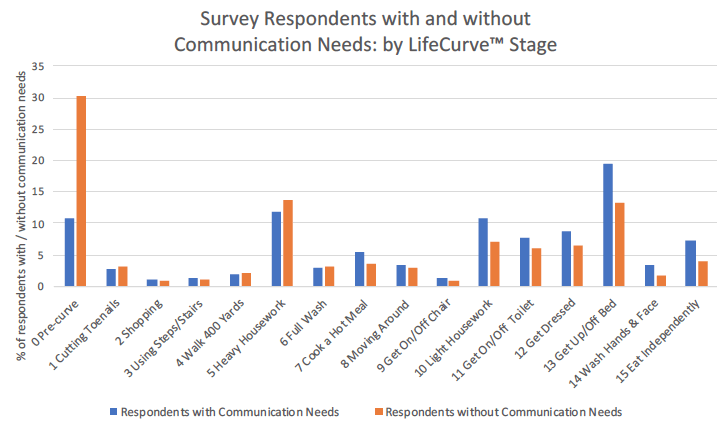
Figure 7: Survey respondents with and without communication support needs: by LifeCurveTM stage
Data for the key LifeCurveTM stages (pre-curve, heavy housework and late-curve) illustrate more clearly the difference in profile of people with and without communication support needs, and are shown in Figure 8 below.
A significantly lower proportion of respondents with communication support needs (11%) reported themselves to be 'pre-curve' and independent in all the activities of daily living, compared with 30% of respondents without communication support needs.
The 'Heavy Housework' stage showed relatively higher AHP involvement for both groups, but with little difference between them.
A significantly higher proportion of people with communication support needs (47%) were at the 'late-curve' stages (10-13), compared with 35% of respondents without communication support needs.
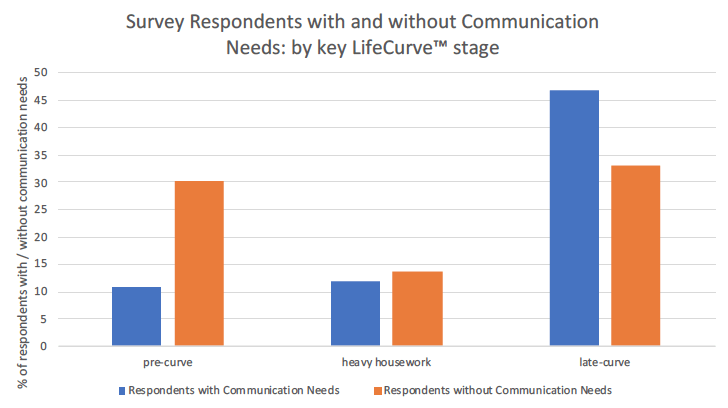
Figure 8: Survey respondents with and without communication support needs: by key LifeCurveTM stages
The same data is shown for respondents aged under-65 in Figure 9 below. Only 25% of respondents with communication support needs fall into this age group, compared with 43% of those without communication support needs. As with the 'all ages' group analysis above, a significantly lower proportion of all respondents with communication support needs (5%) reported themselves to be 'pre-curve' and independent in all the activities of daily living, compared with 18% of respondents without communication support needs. However the proportions at the 'late curve' stages were fairly similar.
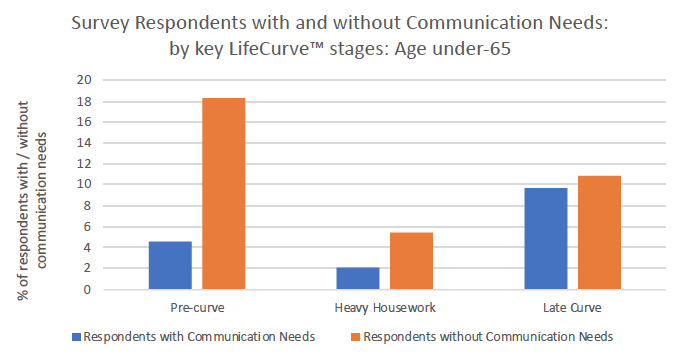
Figure 9: Survey respondents with and without communication support needs: by key LifeCurveTM stages – age under-65
The same data is shown for respondents aged 65+ in Figure 10 below. 75% of respondents with communication support needs fall into this age group, compared with 57% of those without communication support needs. As with the 'all ages' analysis, a significantly higher proportion of people with communication support needs (37%) were at the 'late-curve' stages, compared with 24% of respondents without communication support needs.
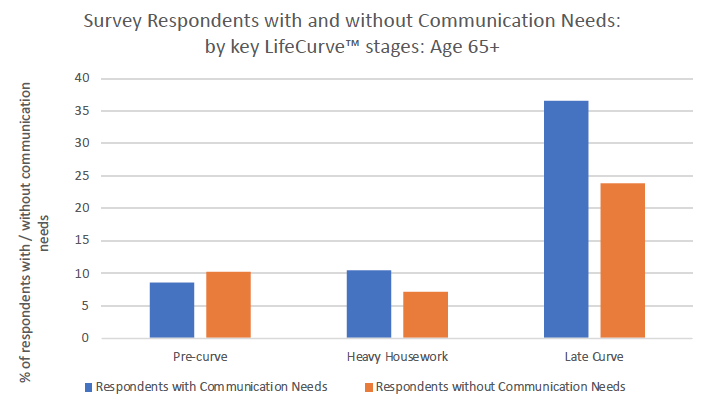
Figure 10: Survey respondents with and without communication support needs: by key LifeCurveTM stages – age 65+
8.2 Appointment Location
Q1. Where are you seeing the AHP member of staff today? Please tick only one option:
- Inpatient - Outpatient - Community - Your Home
Information was available for 99% of respondents with (n=2867) and without (n=10365) communication support needs. Responses across the four categories are shown below in Figure 11.
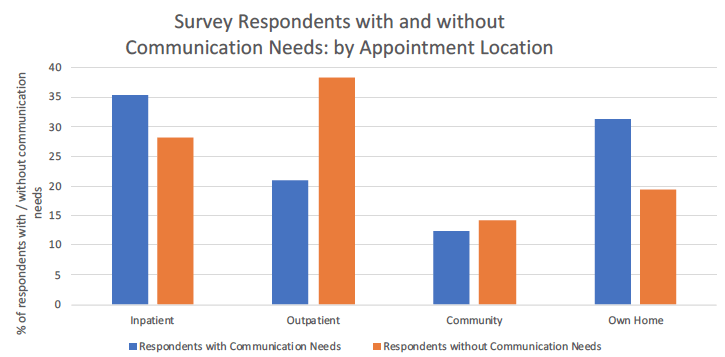
Figure 11: Survey respondents with and without communication support needs: by appointment location
A breakdown of appointment locations by age is shown in Figure 12 below. The chart reflects the older age profile of respondents with communication support needs. This group was more likely to be seen as in-patients or in their own home, particularly in the 65+ age group. Around half of this group were aged 65+ and seen in those two locations. Respondents without communication support needs were most likely to be seen as out-patients, with around 25% of these respondents aged under-65 and seen in this location. As discussed earlier, this location pattern could reflect poorer health and increased frailty and dependence experienced by older respondents with communication support needs.
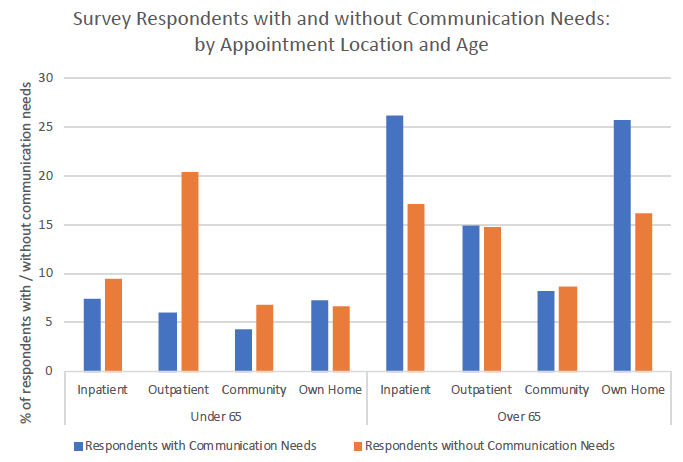
Figure 12: Survey respondents with and without communication support needs: by appointment location and age (under / over 65)
8.3 Travel to Appointment
Q2. If you travelled to get here today, how did you get here? Please tick only one option:
- By Bus - By Car - By Ambulance - N/A - Walking - Combination of travel methods
93% (n=2678) of respondents with and 94% (n=9834) of respondents without communication support needs reported the form of transport they took to the appointment, and this is shown below in Figure 13.
Nearly 60% of respondents with communication support needs reported mode of travel as N/A (non-applicable), possibly reflecting the relatively high proportions seen as in-patients or at home. Around 40% of respondents without communication support needs also reported N/A, with car being the next most common option. It is difficult to draw conclusions from this data on respondents' level of activity and ability to access public transport. It is possible that the accessibility of the hospitals and clinics where they were being seen was more of an influence on transport options selection.
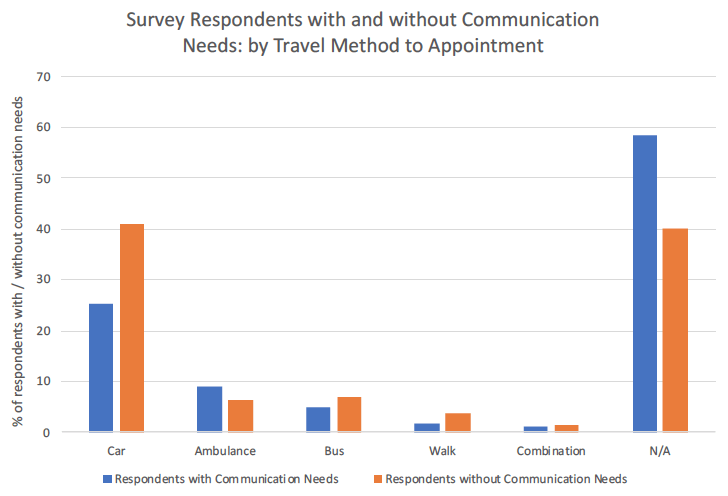
Figure 13: Survey respondents with and without communication support needs: by method of travel to appointment
8.4 Living Arrangements
Q3. Who do you normally live with? Please tick only one option:
With other people e.g. Partner, family, friends - I live alone - In sheltered accommodation or a residential home (e.g. care home)
Information about living arrangements was available for 99% of respondents with (n=2861) and without (n=10367) communication support needs.
About half of respondents with communication support needs lived with others such as partners or families, with 44% reporting living alone. Just 6% reported living in sheltered accommodation or residential homes. Respondents without communication support needs were more likely to live with others, and slightly less likely to live alone or in sheltered accommodation/care homes. This is shown in Figure 14 below.
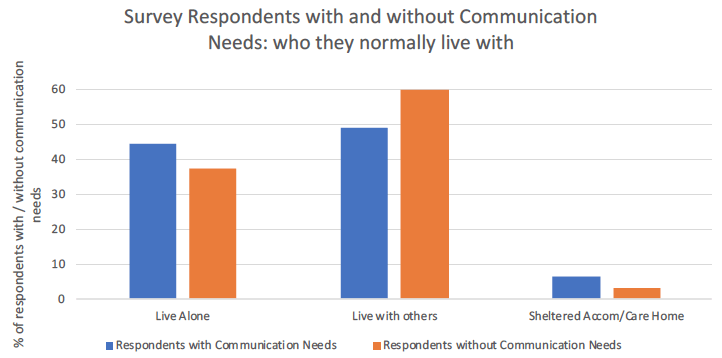
Figure 14: Survey respondents with and without communication support needs: who they normally lived with
Of the 75% of respondents with communication support needs who are aged 65+, the profile of their living arrangements is broadly similar to Figure 13 above. Nearly all were living alone or with others, split fairly evenly, with only 5% living in sheltered accommodation or care homes.
8.5 Work Status
Q5. Are you in work or do you take part in other regular activity? Please tick which apply:
- Yes I work - I am a volunteer - N/A - I help to look after other family members e.g. grandchildren/nieces/nephews
98% of respondents with (n=2813) and without (n=10214) communication support needs answered this question. Only one response was recorded per respondent, so it is not known if respondents had more than one of these roles.
Most respondents selected the N/A (not applicable) option (86% of respondents with and 66% of respondents without communication support needs), suggesting that the options offered did not match their circumstances. It is possible that some of those selecting this option were retired, particularly among respondents with communication support needs, 75% of whom were aged 65+. This is shown in Figure 15 below.
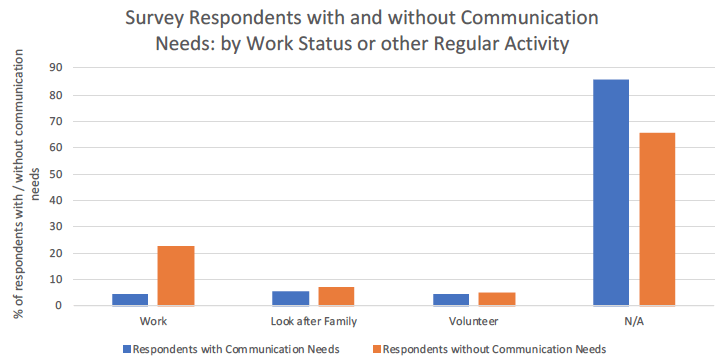
Figure 15: Survey respondents with and without communication support needs: work or other regular activity undertaken
When responses to this question are broken down by age, it is notable that, in the under-65 age group, only 16% of respondents with communication support needs are in work, compared with over 40% of respondents without communication support needs. This is shown in Figure 16 below.
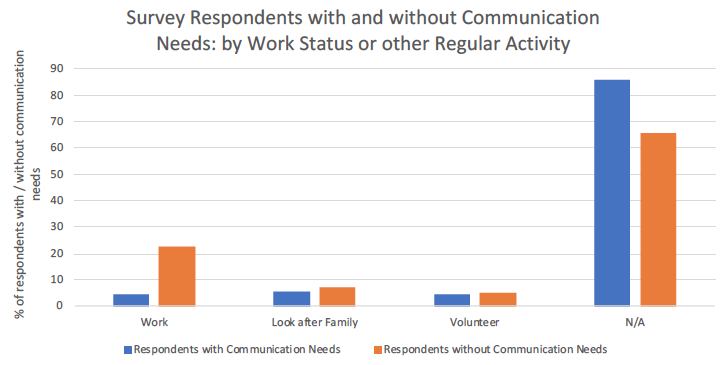
Figure 16: Survey respondents with and without communication support needs aged under-65: work or other regular activity undertaken
8.6 Home Suitability
Q6. Is your home suitable for your needs? Please tick only one option:
- Yes I can manage all daily activities within my home
- I am beginning to struggle with managing daily activities within my home
- I cannot manage some daily activities within my home without help
Data is available for 98% of respondents with (n=2824) and without (n=10226) communication support needs.
Around two fifths of respondents with communication support needs reported they could manage all their daily activities, with three fifths reporting that they were beginning to struggle with or could not manage some daily activities. The opposite pattern was evident among respondents without communication support needs, with around three fifths able to manage and two fifths starting to struggle or unable to manage (shown below in Figure 17).
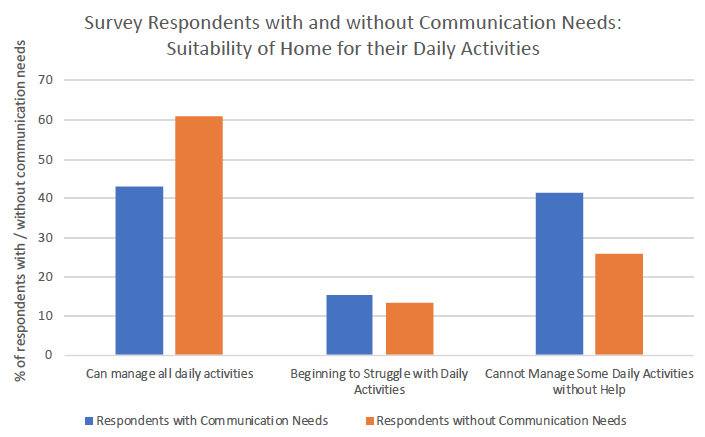
Figure 17: Survey respondents with and without communication support needs: suitability of home for completing daily activities.
When responses to this question are broken down by age, the same pattern is evident in both the under-65 and the 65+ age groups. Respondents with communication support needs in both age groups are less likely to report that they can manage all daily activities and more likely to report that they cannot manage without help. This is shown for the 65+ age group in Figure 18 below.
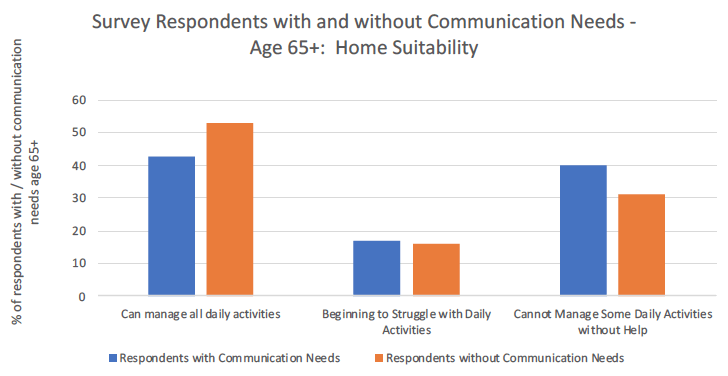
Figure 18: Survey respondents with and without communication support needs – age 65+: suitability of home for completing daily activities
8.7 Carer Status
Q7. Are you a carer? Please tick only one option:
- Yes - No - Both (I care for someone and I have a carer)
Data is available for 93% of respondents with (n=2681) and 92% of respondents without communication support needs (n=9618).
The majority of respondents, both with and without communication support needs, indicated that they were not carers (over 90%), with relatively few (around 5%) indicating they were a carer, and the remainder reporting they were both a carer and cared for (2%). Respondents were not asked if they had a carer, so this information is not available. The breakdown is shown in Figure 19 below. No pattern was observed across age, LifeCurveTM stage, or NHS board.
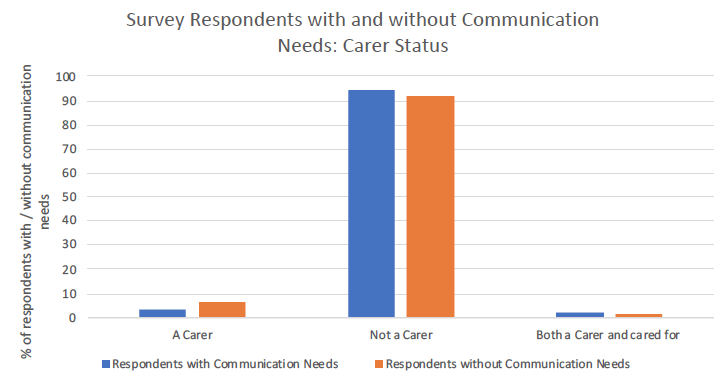
Figure 19: Survey respondents with and without communication support needs: carer status
8.8 Wellbeing
Q8. How would you describe your emotional wellbeing today?
NB: 1 is very good and 5 is very bad
98% (n=2839) of respondents with and 92% (n=9618) of respondents without communication support needs rated their emotional wellbeing on the day of the survey.
The profile of respondents with and without communication support needs was very similar, as shown in Figure 20 below. For both groups, around 60% of respondents rated their emotional wellbeing positively (1 or 2), around 25% rated it neutrally and around 12-13% rated it negatively (4 or 5). This wellbeing profile was similar across age, NHS board, suitability of their home and LifeCurveTM stage.
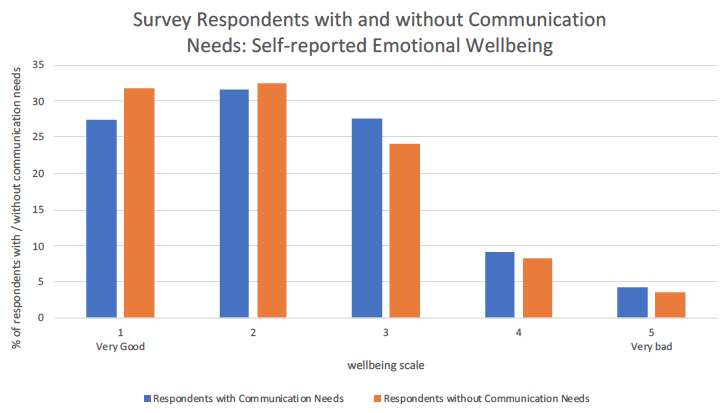
Figure 20: Survey respondents with and without communication support needs: self-reported emotional wellbeing
8.9 Referral Source
Q9. Who arranged for you to see the member of AHP staff today? Please tick only one option:
- A member of health staff - A member of social work staff - Myself, family member or friend - Other - I don't know/not sure - I don't know as I was admitted in an emergency to hospital
Information about referral source was available for 99% (n=2954) of respondents with and 92% (n=9618) of respondents without communication support needs. The pattern for both groups was similar, with around 70% of referrals made by a health staff member, and the remaining 30% spread fairly evenly across the other options.
Contact
Email: debbie.sagar@gov.scot
There is a problem
Thanks for your feedback